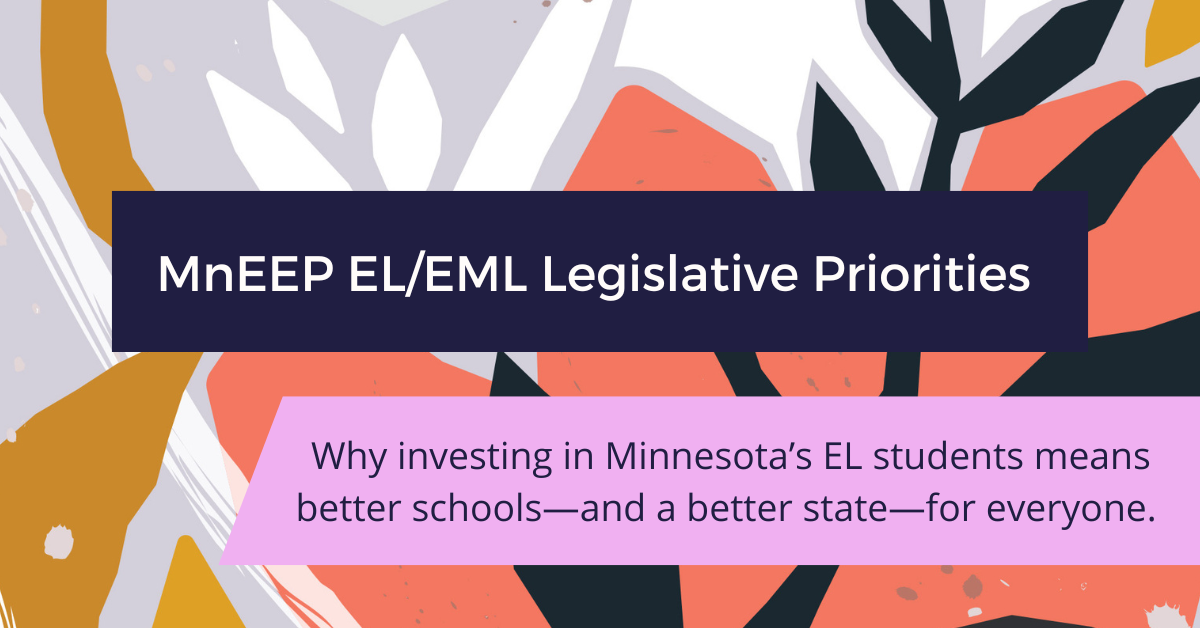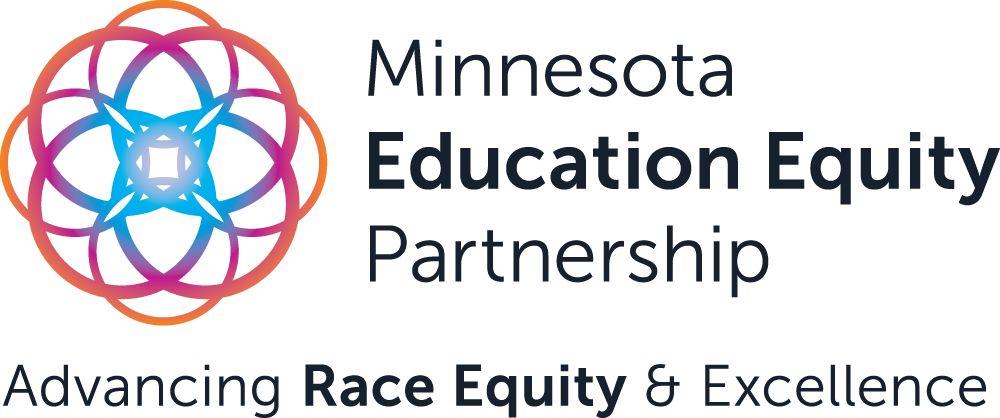
MnEEP Legislative Priorities Part 2: Supporting English Learners
Why investing in Minnesota’s EL students means better schools—and a better state—for everyone.
In 2013, Minnesota’s English learner (EL) K-12 students totaled around 65,000. In 2020, Minnesota’s EL students made up nearly 9 percent of total students, or about 76,000 of Minnesota’s 893,000 K-12 students. That number is expected to continue to grow.
Federal mandates require Minnesota to invest in and support EL and special education. But that investment in EL students hasn’t changed since 2013. That means districts have to dip into their general fund—money for basic education services—to make up for the state’s under-investments in its EL students and the assets they bring to the classroom.
The “best state in the country for kids” means an education system where school leaders and educators embrace the language and culture of each student and value the home language of Black, Latinx, Indigenous, and Asian students, which is vital for their academic success.
Supporting bi- and multilingualism is critical for the success of Minnesota’s Black, Latino/a, Asian, Indigenous, and growing immigrant communities—and it’s critical for the success of Minnesota.
At MnEEP, we know educators are crucial to the success of students. This is why Minnesota must provide the capacity and resources they need to support EL students and honor the assets and multilingualism they bring to the classroom.
Now, with a budget surplus and opportunities for building a more racially just education system, Minnesota can better serve all of its students by investing in EL students.
That means right now, Minnesota must invest in its growing number of EL students and Emerging Multilingual Leaners (EML) in two critical ways:
1. Support school districts and students by reducing the cross-subsidy for EL learners and increasing funding for EL students commensurate with the general ed formula.
What this means:
The “cross-subsidy” is the amount school districts must come up with on their own—in other words, without state funding—to support the needs of EL and special-education students.
The basic state subsidy per EL student per year—the amount over the general fund per student—has remained at $704 since 2003. That means for 20 years, the funding per EL student hasn’t increased alongside the general ed fund, which has increased by 47 percent over the same time period.
In addition, the state funding for students with limited interrupted formal education (SLIFE), a subset of EL students, has remained at $954 per student per year.
Why this matters:
This is akin to leaving a train car at the station while the rest of the locomotive increases speed to align with the rising costs of student needs and inflation.
Currently, 76 percent of schools across Minnesota are at or above the capped state funding for EL students. This means these districts are forced to use money from the general ed fund for EL services, resulting in fewer general ed dollars, or they must rely on local property taxpayers for levies to increase district funding.
Why now:
EL students are at a deep deficit. Minnesota must make critical investments now to meet the needs of Minnesota’s growing number of EL students.
However, a one-time investment isn’t enough. The train car cannot continue to be left at the station, resulting in deep cuts for all student services. Minnesota must index the EL basic and EL concentration formula so, as the general ed formula increases, so does funding for EL students each biennium.
The increased revenue will provide the Minnesota Department of Education and school districts with much-needed support and accountability for EL staff and programs, including SLIFE programs, and allow the MDE to develop an EL and parent advisory council to provide insight and feedback on essential needs and programs.
2. Invest in and support administrators and educators through micro-credentialing to advance EL success.
What this means:
Micro-credentialing is different from the EL teaching licensure requirements in that they are non-mandatory opportunities for educators and administrators to build holistic student supports while also building professional development credentials and “steps” required to increase educator pay.
This would allow for EL educators to receive micro-credentialing in additional general ed areas such as English language arts, math, science, and social studies and allow general ed educators in these core areas to receive micro-credentialing in EL/EML to better support the unique needs of their growing number of EL students.
Why this matters:
Educator training in multiculturalism and multilingualism is critical for all Minnesota students’ success. By 2029, the majority of K-12 students in Minnesota will be students of color or Indigenous. Minnesota must act now to build an education system that honors these students.
Why now:
Minnesota must invest in the success of its teachers if we are to support the changing needs of our students.
Right now, Minnesota is facing a dramatic drop in teaching candidates. What’s more, it ranks among the states with the highest rates of under-qualified teachers, putting our students, especially our most vulnerable students, at risk.
This will have a compounding, catastrophic impact on EL students if we don’t act now to support educators in professional development commensurate with pay and opportunities for success.
—-
We are hopeful the governor and Minnesota legislature will take the steps necessary to invest in EL students now to reduce the ongoing education debt EL students have faced for nearly two decades.
For more information, please contact Leiataua Dr. Robert Jon Peterson at: jpeterson@mneep.org

